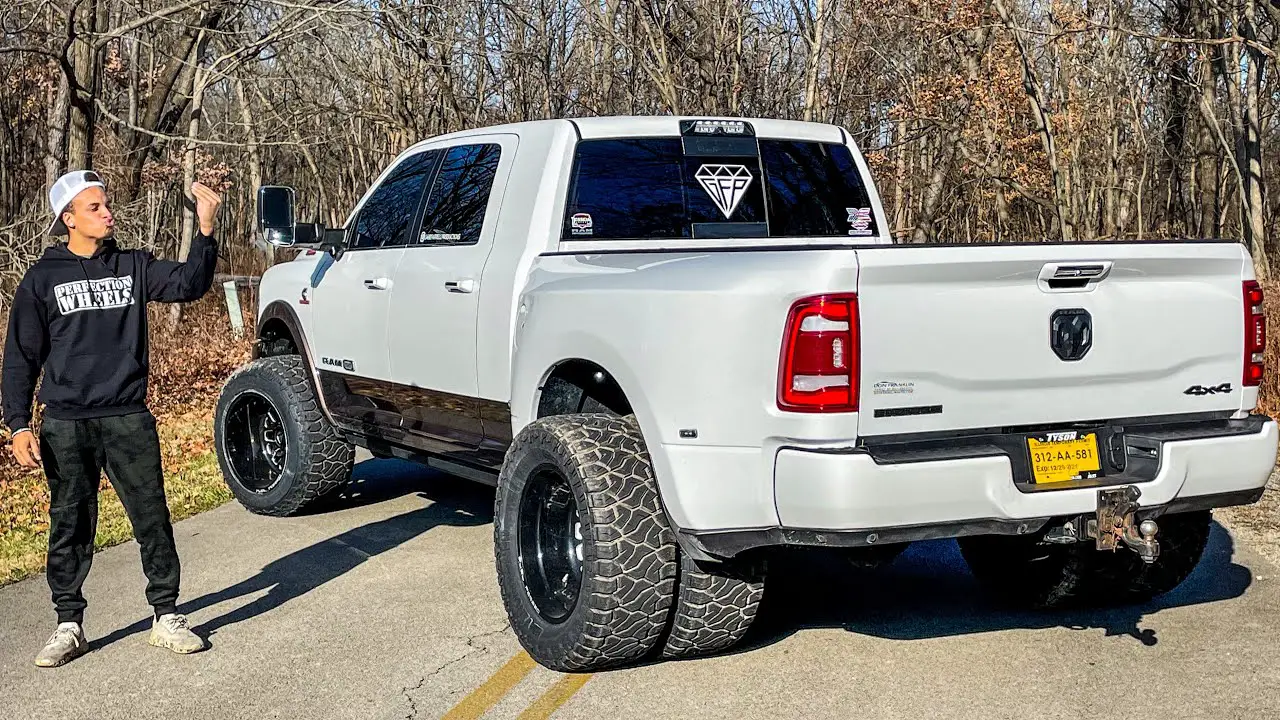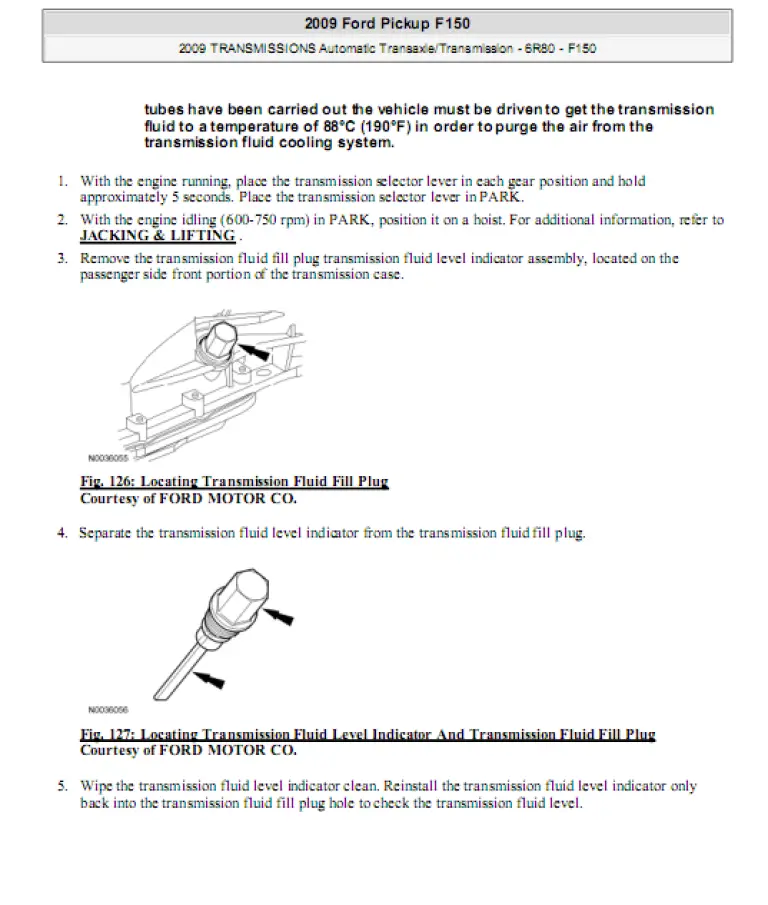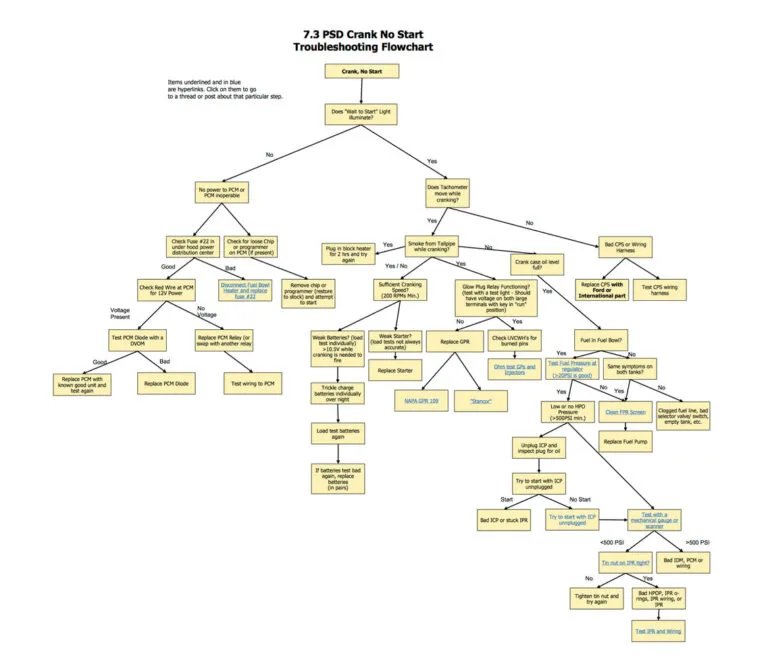How Wide is a Dually Truck: Essential Measurements Explained
A dually truck is typically about 8 feet wide, including its dual rear wheels. This width offers increased stability and load-carrying capacity.
Dually trucks, also known as dual-rear-wheel (DRW) trucks, are essential for heavy-duty tasks. These trucks are popular among those who need to tow large trailers or haul heavy loads. Their width, around 8 feet, provides the necessary stability and support for such demanding jobs.
Businesses and individuals in construction, farming, and transportation frequently use dually trucks. Their design ensures better traction and load distribution, making them indispensable for heavy-duty applications. Understanding their dimensions helps in planning for parking and maneuvering in tight spaces. This knowledge is crucial for both safety and efficiency in various industries.

Credit: m.youtube.com
Introduction To Dually Trucks
Dually trucks are known for their distinctive wide rear end. These trucks are built for heavy-duty tasks. They have increased stability and load capacity. But what exactly makes a dually truck? Let’s dive into the details.
What Is A Dually?
A dually truck features dual rear wheels on each side. This gives it a total of four rear wheels. The extra wheels provide more stability. They also offer better traction, especially under heavy loads.
Dually trucks are often used in towing. They excel at hauling heavy loads that regular trucks can’t handle.
Popularity And Uses
Dually trucks are popular in construction and farming. They are also favored by those who tow large trailers.
Many RV owners choose dually trucks for their towing needs. These trucks ensure a smooth and safe journey, even with heavy loads.
| Use | Benefits |
|---|---|
| Construction | Increased load capacity |
| Farming | Better traction on uneven ground |
| Towing | Enhanced stability |
In summary, dually trucks are versatile. Their unique design serves many industries and needs.
Standard Dimensions
When considering a dually truck, understanding its dimensions is crucial. Dually trucks have dual rear wheels, which impact their overall size. This section will cover the standard dimensions of a dually truck.
Overall Width
A dually truck’s width is significant due to the extra rear wheels. The overall width ranges between 8 to 8.5 feet. This width includes the mirrors, making it wider than regular trucks. The dual rear wheels provide better stability and weight distribution. However, the added width can make driving in narrow spaces challenging. Always check the exact width in the truck’s specifications.
Wheelbase And Length
The wheelbase is the distance between the front and rear axles. For dually trucks, the wheelbase varies based on the model. Commonly, it ranges from 130 to 176 inches. The length of the truck impacts maneuverability and cargo capacity. Typically, a dually truck’s length ranges from 19 to 24 feet. This includes the cab and bed length. Knowing these dimensions helps in choosing the right truck for your needs.
| Dimension | Range |
|---|---|
| Overall Width | 8 – 8.5 feet |
| Wheelbase | 130 – 176 inches |
| Length | 19 – 24 feet |
Choosing a dually truck involves understanding its standard dimensions. This ensures you pick the right truck for your tasks. Always measure your parking area to ensure it fits. Happy driving!
Tire And Axle Specifications
Understanding the tire and axle specifications of a dually truck is crucial. These specifications directly impact the truck’s width. Let’s delve deeper into the specifics.
Tire Width
Dually trucks have two rear wheels on each side. This setup requires wider tires. Typically, the tire width for a dually truck ranges between 235 to 265 millimeters. This width ensures better traction and stability. Here’s a quick breakdown:
| Tire Size | Width (mm) |
|---|---|
| 235/85R16 | 235 |
| 245/75R17 | 245 |
| 265/70R18 | 265 |
The wider tires help in carrying heavy loads. It also provides a better grip on the road. This makes dually trucks perfect for towing and heavy-duty tasks.
Axle Configuration
The axle configuration of a dually truck is unique. It has two rear axles, each with a pair of wheels. This setup distributes weight evenly. Let’s look at the typical axle setup:
- Rear Axles: Dual axles with four wheels
- Front Axle: Single axle with two wheels
This configuration increases the truck’s stability. It also enhances its towing capacity. The width of the rear axle can vary. Generally, the rear axle width is around 74 inches. This width includes the space taken by the dual tires.
In summary, the tire and axle specifications of a dually truck are designed for heavy-duty performance. The wider tires and unique axle setup contribute to its overall width and capability.
Comparison With Single-wheel Trucks
Understanding the differences between dually trucks and single-wheel trucks is crucial. Dually trucks have four rear wheels, providing more stability and load capacity. Single-wheel trucks, on the other hand, have two rear wheels. This section will explore these differences in terms of width and performance.
Width Differences
Dually trucks are wider than single-wheel trucks. This increased width is due to the additional rear wheels. Here’s a table comparing the average widths:
| Type of Truck | Average Width (inches) |
|---|---|
| Dually Truck | 96 inches |
| Single-Wheel Truck | 80 inches |
Dually trucks are about 16 inches wider. This can affect parking and maneuvering in tight spaces.
Performance Variations
Dually trucks perform differently from single-wheel trucks in several ways:
- Load Capacity: Dually trucks can carry heavier loads. The extra wheels distribute weight better.
- Stability: The wider stance offers better stability, especially on uneven terrain.
- Towing: Dually trucks excel in towing large trailers. The extra wheels provide better traction.
- Fuel Efficiency: Single-wheel trucks are more fuel-efficient. They have less rolling resistance and weight.
Performance depends on your needs. Choose a truck that fits your specific requirements.
Impact On Driving And Parking
Dually trucks are wider than regular trucks. This has a big impact on driving and parking. The extra width can make some things harder. Here, we explore how dually trucks affect maneuverability and parking.
Maneuverability
Dually trucks have an extra set of wheels at the back. This increases the truck’s width by about 10-12 inches. Maneuvering a wider vehicle can be tricky.
Turning in tight spaces becomes harder. Drivers need to be extra careful. Narrow roads and sharp turns require more attention. The extra width makes it difficult to judge distances.
In heavy traffic, changing lanes can be challenging. The driver must ensure there’s enough space. They need to use mirrors frequently. The added width can make it hard to see smaller vehicles.
Parking Challenges
Parking a dually truck can be quite tough. Many parking spaces are designed for regular vehicles. The extra width of a dually truck means it may not fit properly.
| Parking Type | Challenges |
|---|---|
| Street Parking | Hard to fit in narrow spaces |
| Parking Lots | May take up two spaces |
| Garages | Often too narrow for the truck |
Street parking becomes difficult. Finding a spot wide enough is rare. In parking lots, the truck may need two spaces. This can lead to parking fines.
Garages are another issue. Many garages are too narrow for a dually truck. Drivers should measure their truck and garage before parking.

Credit: www.motortrend.com
Regulations And Legal Considerations
When driving a dually truck, understanding regulations and legal considerations is crucial. These trucks have unique dimensions. Knowing width restrictions and compliance requirements is essential. This guide will help you navigate these rules.
Width Restrictions
The width of dually trucks can vary. Federal law sets a standard width limit of 102 inches (8.5 feet). This rule applies to most public roads. States may have their own rules. Always check local regulations.
Some states allow wider vehicles with special permits. Urban areas may have stricter limits due to narrow roads. Rural areas might be more lenient. Knowing these restrictions helps avoid fines and penalties.
| State | Standard Width Limit | Special Permits |
|---|---|---|
| California | 102 inches | Available for wider loads |
| Texas | 102 inches | Available for wider loads |
Compliance Requirements
Compliance with width regulations is mandatory. Ensure your dually truck meets all standards. This includes proper mirrors and lighting. Reflectors may be necessary for visibility.
Inspect your truck regularly. Maintain all safety equipment in working order. Document any modifications made to your truck. Keeping records helps in case of inspections.
- Check mirrors
- Ensure proper lighting
- Install reflectors if needed
- Keep documentation of modifications
Weigh stations are checkpoints where trucks are inspected. These stations ensure compliance with size and weight regulations. Failure to comply can lead to fines and delays.
- Approach the weigh station slowly
- Follow instructions given by officers
- Provide necessary documentation
- Allow inspection of your truck
Customization And Aftermarket Modifications
Owners often customize their dually trucks. This enhances performance and aesthetics. Customization options include wider tires and body modifications. These changes can make a truck stand out.
Wider Tires
Wider tires offer several benefits. They improve traction and stability. This is crucial for heavy loads. Wider tires also enhance the truck’s appearance. Many owners prefer this rugged look.
- Increased traction
- Better stability
- Aesthetic appeal
Choosing the right tires is essential. Different brands offer varying benefits. Consult experts for the best options.
Body Modifications
Body modifications can transform a dually truck. Some common mods include:
- Fender flares
- Lift kits
- Custom bumpers
Fender flares protect the truck’s body. They also allow for wider tires. Lift kits raise the truck’s height. This can improve off-road capability.
Custom bumpers add a unique touch. They also offer added protection. These modifications can make a truck more functional.
| Modification | Benefit |
|---|---|
| Fender Flares | Allows for wider tires |
| Lift Kits | Improves off-road capability |
| Custom Bumpers | Added protection |
Body modifications enhance a truck’s functionality and appearance. Always ensure modifications comply with safety standards.
Choosing The Right Dually For Your Needs
Choosing the right dually truck requires careful thought. You need to know what suits your needs best. This section will guide you through the process.
Assessing Requirements
First, assess your requirements. Think about what you will use the truck for. Will you be hauling heavy loads? Do you need extra stability? A dually truck has two rear wheels on each side. This gives it more stability and can carry more weight.
- Hauling Heavy Loads: If you need to haul heavy loads, a dually is a good choice.
- Towing Capacity: Dually trucks have a higher towing capacity.
- Stability: The extra wheels provide more stability, especially on rough terrain.
Popular Models
There are several popular dually truck models to consider. Each one has its own features and benefits.
| Model | Width | Towing Capacity |
|---|---|---|
| Ford F-350 | 8 feet | 21,000 lbs |
| Chevrolet Silverado 3500HD | 8 feet | 23,100 lbs |
| Ram 3500 | 8 feet | 35,100 lbs |
Choose a model based on your specific needs. Consider the width and towing capacity. This will help you make the right choice.
Credit: 67-72chevytrucks.com
Frequently Asked Questions
How Wide Is A F350 Dually?
The width of a Ford F350 dually is approximately 96 inches. This includes the side mirrors.
How Wide Is A 1997 Ford F350 Dually?
The 1997 Ford F350 dually has a width of approximately 79. 3 inches without mirrors. This measurement ensures accuracy.
Are Dually Beds Wider?
Yes, dually truck beds are wider. They have extra rear wheels, which increases the bed’s width for better stability and load capacity.
How Wide Is A Ford Dually Axle?
A Ford Dually axle is typically about 72 inches wide. This width can vary slightly by model year.
Conclusion
Understanding the width of a dually truck is essential for various tasks. It helps in planning routes and parking. With this knowledge, you can make informed decisions. Always consider the truck’s dimensions for safe and efficient driving. This awareness ensures better handling and compliance with road regulations.







